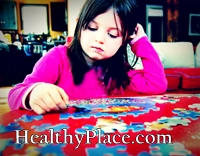Strategies for Enhancing Social Interaction in ADHD Children
Ideas on how to improve social skills in children with ADHD as many ADHD children often lack the social skills necessary to get along with their peers and communicate with others.
How to Improve Social Skills in Children with ADHD
The direct teaching of social rules or conventions which guide interactions and which most children learn without direct input. These might include how to greet somebody, how to initiate a conversation, taking turns in a conversation, and maintaining appropriate eye contact.
Modelling of social skills such as the above for the target child to observe ; or shared viewing and discussing of a video-tape of two people talking or playing, including reference to any non-verbal messages which can be discerned.
 Providing specific and structured activities which are to be shared with one or two selected classmate(s). These might range from some jobs to be completed in the school during break or lunch time, games involving turn-taking (board games based on logic or spatial intelligence such as Chess rather than games based on inference-making like Cluedo, simple card games ), tasks or mini-projects to be completed on the computer ( e.g. preparing large print labels for work to be displayed around the classroom or having the major responsibility for printing a class newsletter ).
Providing specific and structured activities which are to be shared with one or two selected classmate(s). These might range from some jobs to be completed in the school during break or lunch time, games involving turn-taking (board games based on logic or spatial intelligence such as Chess rather than games based on inference-making like Cluedo, simple card games ), tasks or mini-projects to be completed on the computer ( e.g. preparing large print labels for work to be displayed around the classroom or having the major responsibility for printing a class newsletter ).
Identifying particular skills in the target child and inviting him/her to offer some help to another child who is less advanced (e.g. if your child is really good with the computer then maybe they can help another child who may find computers more difficult).
Encouraging his or her participation in school clubs or organised/structured activities during the lunchtime.
Direct advice about when, and for how long, the child may go on about a favourite topic, perhaps with the use of a signal by which to indicate when to stop ( or not to start ! ). Giving notice of something fifteen minutes before the need to go out or change then a reminder every 5 minutes then every minute 2 minutes before the deadline - you must make sure to make it clear each time e.g. in 15 minutes we need to get ready to go to the shop, in 10 minutes we need to get ready to go to the shop, in 5 minutes we need to get ready to go to the shop, 2 minutes to get ready to go to the shop, 1 minute to get ready to go to the shop. Keep things very clear and specific.
Recognising the Viewpoints and Feelings of Other People
In the classroom setting, instructions should be very precise with no opportunity to misunderstand what is expected. It may be necessary to follow up group instructions with individual instructions rather than assuming that the target child has understood what is needed or can learn "incidentally" from watching what other children do.
Direct teaching about social situations such as how to recognise when someone is joking or how to recognise how someone else is feeling. This latter might begin with a series of cartoon faces with clearly drawn expressions indicating anger, amusement, etc., with the target child helped to identify the various feelings and guess what caused them.
Games or role play to focus upon the viewpoint of another person. This might include simply looking at pictures of children or adults interacting or working together or sharing some activity, and asking what is happening or what a given individual is doing, and what he might be thinking.
Direct teaching of what to do ( or what not to do ) in certain situations, such as when the teacher is cross either with the individual child or with the whole group.
Avoiding Social or Communications Breakdown
- Helping the child to recognise his/her own symptoms of stress or distress, with a "script" by which to try relaxation strategies ; or having in place a system where it is acceptable for the child briefly to remove him/herself from the class as necessary.
- The establishment of a "buddy" system or a system where the child in question is encouraged to observe how other children behave in particular situations.
- Having selected peers specifically model social skills. The buddy might also be encouraged to be the partner of the ADHD child in games, showing how to play, and offering or seeking help if the child is teased.
- The use of the "Circles of Friends" approach designed to identify (social) difficulties, and to set targets and strategies by which other children in the class can be helpful and supportive, with the long term aim of increasing social integration and reducing anxiety.
- The availability of a regular time slot for support from an adult in terms of feedback concerning (social) behaviour, discussing what is going well and less well, and why ; and enabling the child to express concerns or versions of events.
- A clarity and explicitness of rules in the classroom to minimise uncertainty, and to provide the basis for tangible rewards.
- Reminders about conversation rules ; and using videos of TV programmes as a basis for observing appropriate interaction.
- In a group setting, adopting the circle time strategy of limiting verbal contributions to whomsoever is in possession of some object (while ensuring that the object circulates fairly among the whole group).
- Using a video of a situation to illustrate behaviour that is inappropriate in, for example, causing irritation to other children, then and discussing why ; making a video of the target child him/herself and discussing where there are incidents of good social behaviours.
- In respect of repetitive questioning or obsessive topics of conversation ......... :
- Provide a visual timetable plus bulletins of any innovations so there is no uncertainty about the day's routine.
- Make it clear that you will only respond to a question when a given task has been completed.
- Agree a later time for responding to the question and allow the child the opportunity to write it down so they don't forget.
- Specify one particular place, such as the playground, where the question will be answered.
- Explain quietly and politely that the child has asked this before and maybe suggest that it might be a good idea to write down the answer so that the next time they want to ask the same question rather than you becoming a bit exasperated with them that they can pick up the card where the answer is written.
- If obsessive talking appears to mask some anxiety, seek to identify its source, or teach general relaxation techniques.
- Specify times when the obsessive topic can be introduced, or allow an opportunity as a reward for finishing a piece of work.
- Provide time and attention, and positive feedback, when the child is not talking about the given topic.
- Agree with the child and his classmates a signal to be used by those classmates when they are tired of the topic.
- Allow some practice of talking at a reasonable volume, with an agreed signal to be given if it is too loud ; or tape-recording speech so that the child can evaluate the volume him/herself.
Peer Awareness
A common theme in much of the on going research and studies about social skills in the child with ADHD is that the work intended to help the child needs to involve other children to at least some extent. If the focus is upon peer interaction, there is little logic in seeking to improve performance by using only one to one sessions.
It would therefore be desirable for perhaps two or three non-ADHD peers to participate in the activities or video watching so that there could be a shared discussion and an actual possibility to practice some of the skills by the children in various make believe situations and not simply by target child and adult. This latter arrangement risks being somewhat abstract when evidence suggests the value of working on social skills within a social context.
Also, if peers are involved in the training strategies and share the same rules, this may reduce stress upon the ADHD child and increase the rate at which (s)he internalises the targeted behaviours in real situations they can identify with.
The idea that simply placing a child with ADHD in a mainstream class will not actually be the solution for that child to develop socially appropriate behaviours. There needs to be direct teaching or modelling of the behaviours, and it is likely that the number of such behaviours needs to be limited to one or two at a time if true learning and consolidation is to take place.
Learning from peers can take three forms:
Where the target child is placed within a group of peers whose positive social skills will be modelled constantly by others and where it has been made clear to the ADHD child what to observe and imitate. So the need to explain carefully what you want your child to watch the other children doing needs to be fairly specific - e.g. watch how this group take turns to throw the dice in the game.
The training approach involves peers being shown how to prompt some particular response from the child with ADHD and then to offer praise when the child acts appropriately. So the group you are working with need to know exactly what you are wanting your child to learn - e.g. turn taking so they can go round with the dice with the person with the dice passing this to the next child saying it is now your turn to throw the dice all round the group until it comes to your child's turn. Then the child before can hand your child the dice and say clear that it is now their turn to throw the dice and thank them for waiting nicely for everyone else to have their turn. Then once the child has thrown the dice for them to then pass the dice to the next child saying it is now your turn to throw the dice when that child can then say thank you for giving me my turn. Things like this although may sound very strange help our children to learn the idea of turn taking by constant reinforcement as they learn much better by various forms being taken - watching - speaking the instruction and then interaction of praise for getting it right.
The peer-initiated approach involves showing peers how to talk with the ADHD child and how to invite him or her to respond. It enables the other children to learn that this particular child has a problem and that you are trusting them to help the child to learn how to take part correctly, this therefore also helps the other children to work on the skills they need to continue to involve the child in other activities by asking them in the right manor and how to explain the rules in a way your child will understand in the future.
There is evidence that involving all children in the development of social skills has more benefits than working with the targeted child(ren) only ; there is also the point that this approach avoids singling out the child with the ADHD characteristics which might otherwise introduce a further disadvantage before one even begins ! There is a similar risk in a constant pairing of the ADHD child with a support assistant in that a dependency may be established, and any need or motivation to interact with other children is reduced.
A further implication behind all this is that there will be benefits in providing some sensitive awareness-raising among classmates of the nature of ADHD characteristics and behaviours. There is evidence ( e.g. Roeyers 1996) that giving peers this kind of information can improve the frequency and quality of social interaction between the ADHD child and classmates ; and that it can increase empathy towards the ADHD individual whose idiosyncrasies become more understandable and are not seen as provocative or awkward.
The whole point of this being a Social problem leads everyone to realise that the best way to help your child is to involve them in controlled social situations as this helps not only your child but it also allows others to learn how to involve your child in other situations without this causing as many problems as it may have done in the past.
REFERENCES
- Roeyers H. 1996 The influence of non-handicapped peers on the social interaction of children with a pervasive developmental disorder. Journal of Autism and Developmental Disorders 26 307-320
- Novotini M 2000 What Does Everyone Else Know That I Don't
- Connor M 2002 Promoting Social Skills among Children with Asperger Syndrome (ASD)
- Gray C My Social Stories Book
- Searkle Y, Streng I The Social Skills Game (Lifegames)
- Behaviour UK Conduct Files
- Team Asperger Gaining Face, CD Rom Game
- Powell S. and Jordan R. 1997 Autism and Learning. London : Fulton.
(With particular reference to the chapter by Murray D. on autism and information technology )
next: Natural Alternatives: Super Blue Green Algae for ADHD
~ back to adders.org homepage
~ adhd library articles
~ all add/adhd articles
APA Reference
Staff, H.
(2008, December 20). Strategies for Enhancing Social Interaction in ADHD Children, HealthyPlace. Retrieved
on 2024, April 19 from https://www.healthyplace.com/adhd/articles/strategies-for-enhancing-social-interaction


